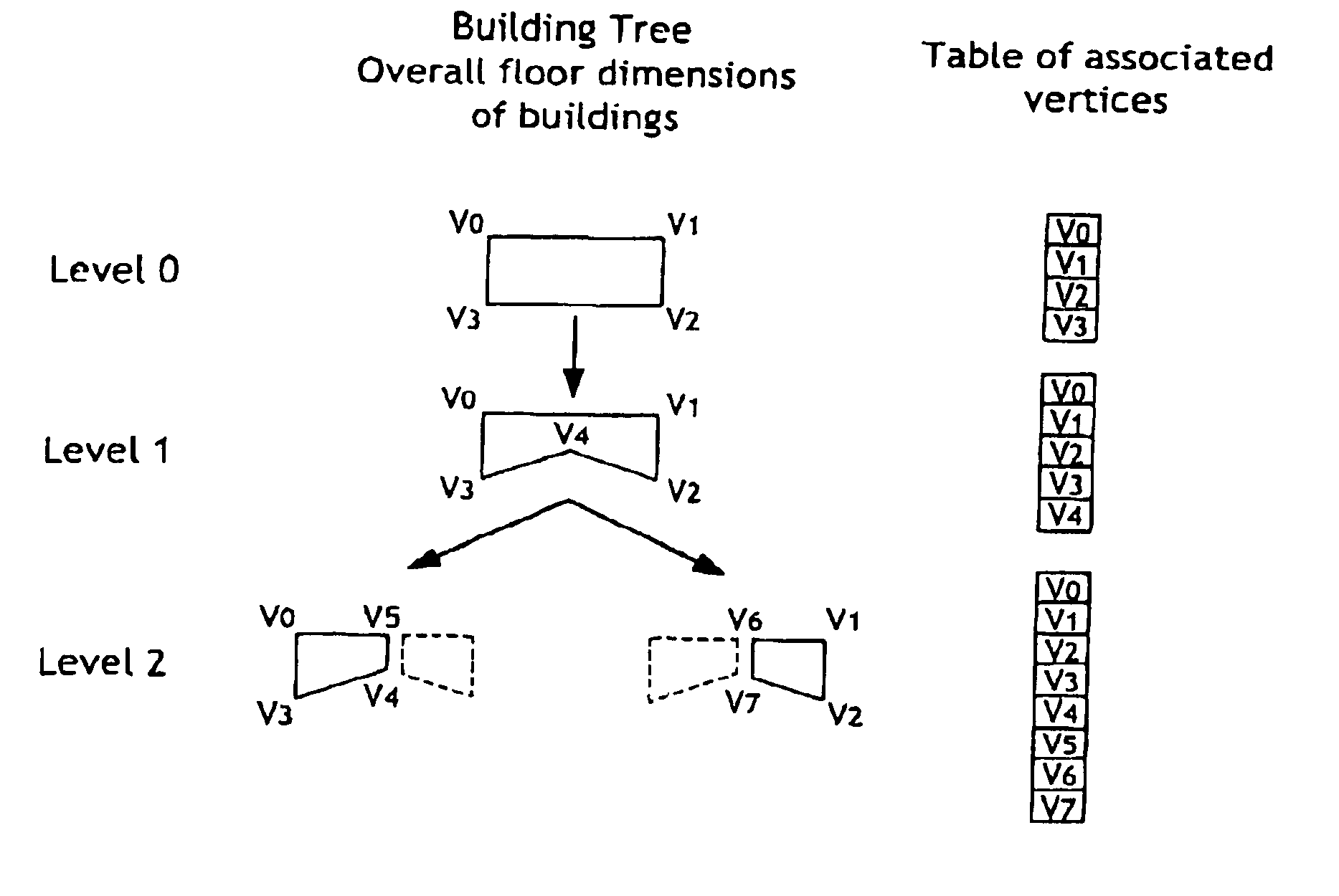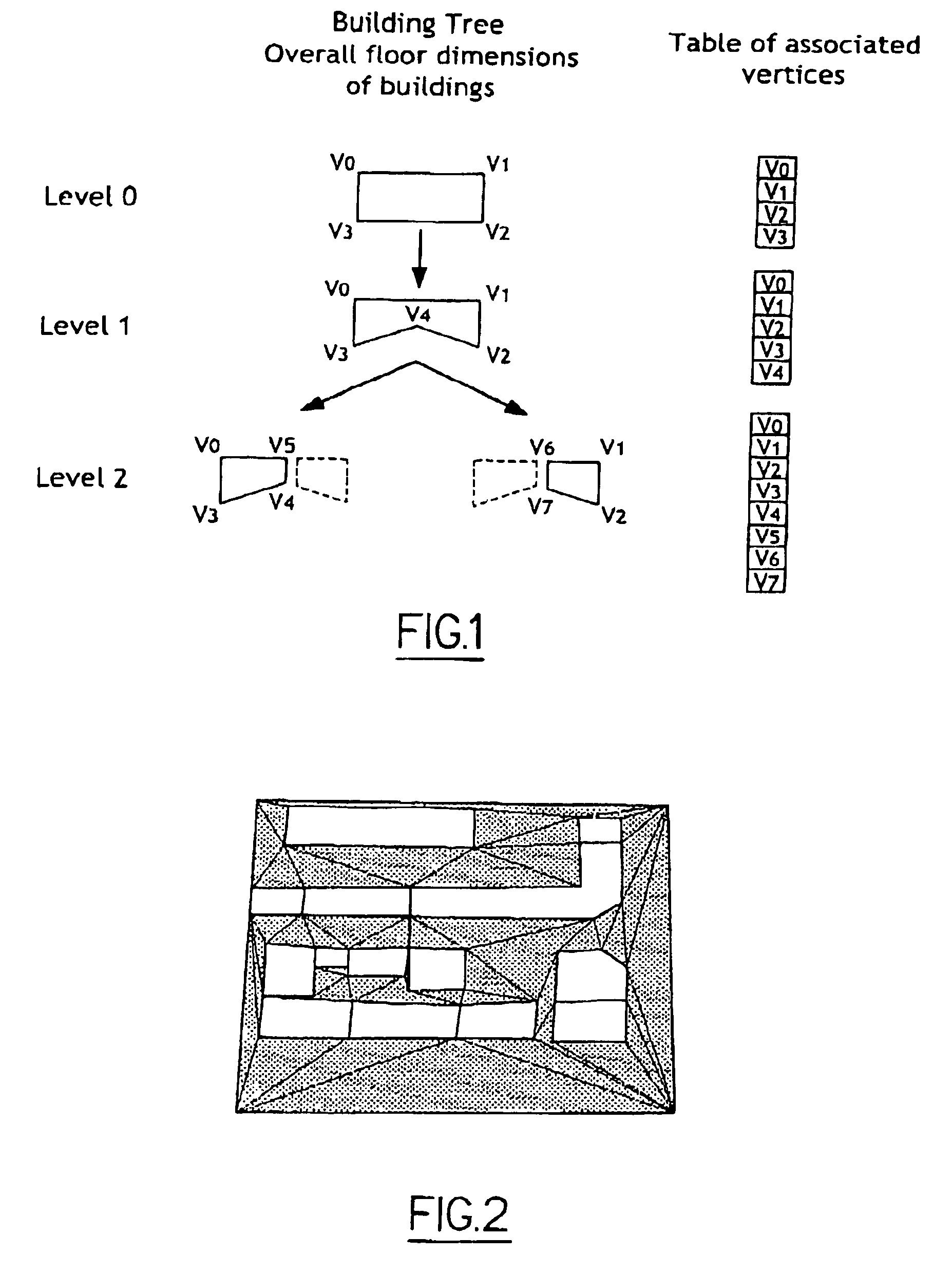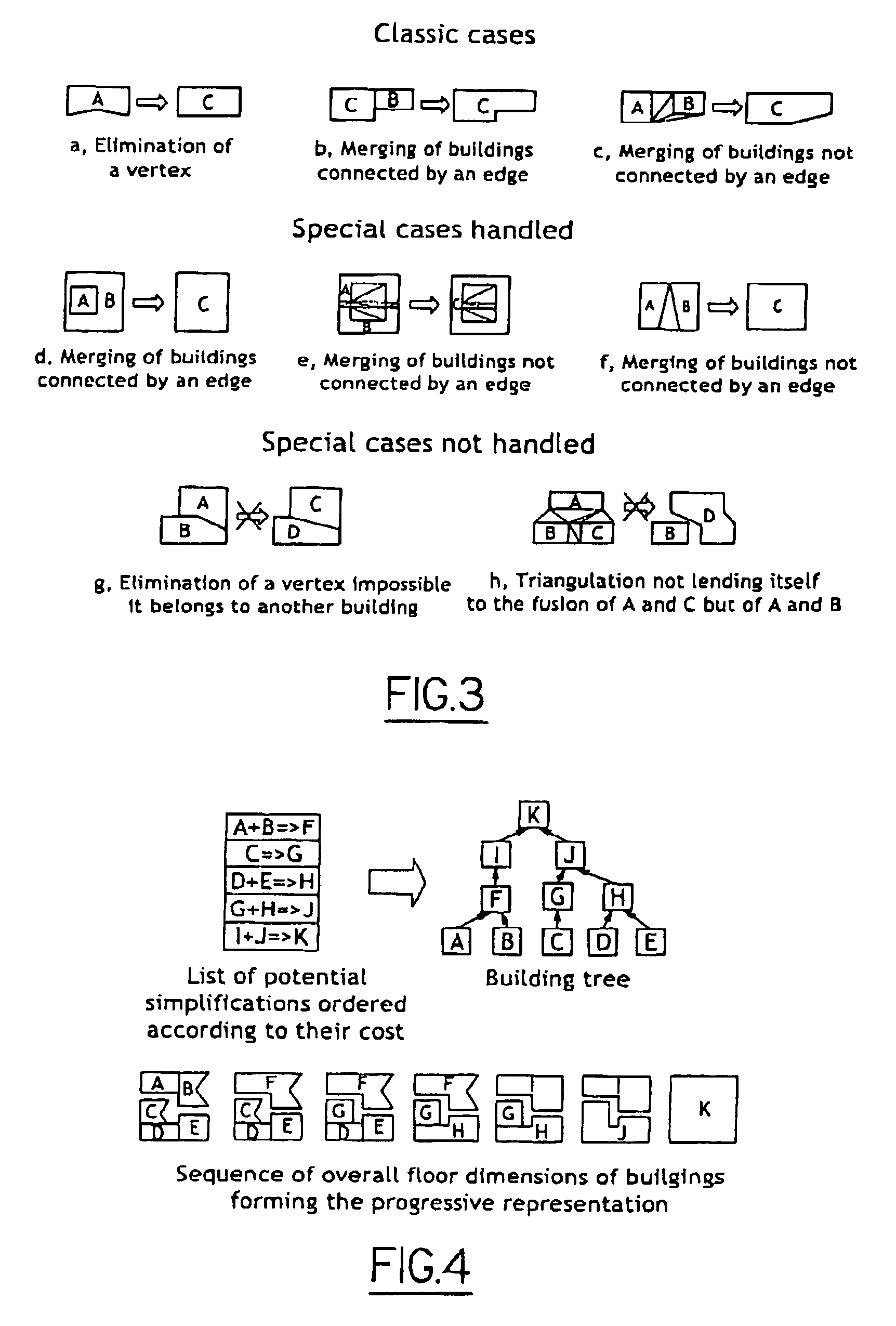Process for managing the representation of at least one 3D model of a scene
a 3d model and scene technology, applied in the field of scene management, can solve the problems of not being able to adapt to visualising realistic urban scenes, affecting the quality of scene representation, etc., and achieve the effect of reducing the number of images
- Summary
- Abstract
- Description
- Claims
- Application Information
AI Technical Summary
Benefits of technology
Problems solved by technology
Method used
Image
Examples
Embodiment Construction
[0039]In this section is given the 2D½ informations representing all the buildings provided by most of the algorithms for modelling a city automatically, thus allowing the progressive multi-scale representation implemented to be specified.
[0040]Then the algorithm is given that allows this progressive multi-scale representation to be generated.
[0041]Lastly, we propose an example of use of this representation on a visualisation and navigation system in vast urban environments on networks.
1 2D½ Representation of Buildings in a City
[0042]A city cannot be modelled manually given the substantial number of buildings of which it is made up. Most automatic city modelling techniques make it possible, from 2D½ information (videos, photographs, cadastral maps, etc), to extract the necessary 2D½ information allowing the 3D model of the city to be reconstructed by extrusion (segmentation of the image determining the overall floor dimensions of the buildings and techniques derived from photogramme...
PUM
 Login to View More
Login to View More Abstract
Description
Claims
Application Information
 Login to View More
Login to View More - R&D
- Intellectual Property
- Life Sciences
- Materials
- Tech Scout
- Unparalleled Data Quality
- Higher Quality Content
- 60% Fewer Hallucinations
Browse by: Latest US Patents, China's latest patents, Technical Efficacy Thesaurus, Application Domain, Technology Topic, Popular Technical Reports.
© 2025 PatSnap. All rights reserved.Legal|Privacy policy|Modern Slavery Act Transparency Statement|Sitemap|About US| Contact US: help@patsnap.com



